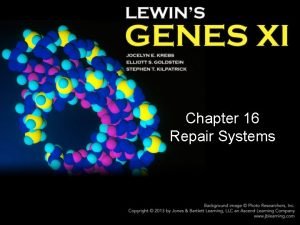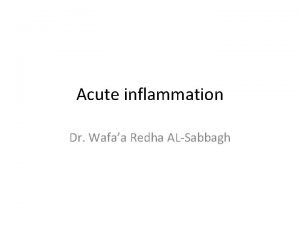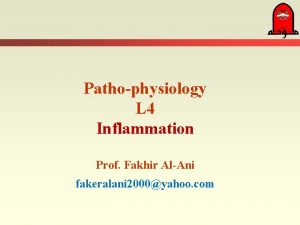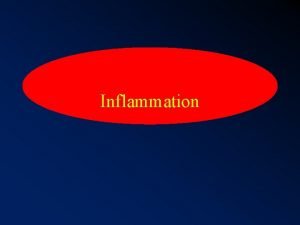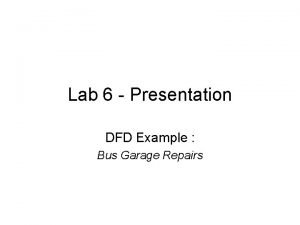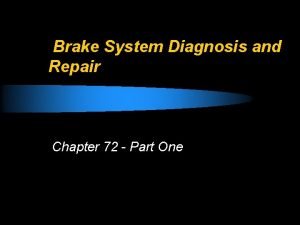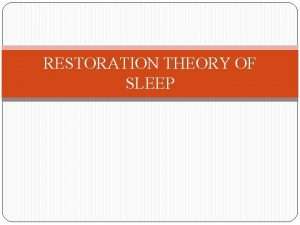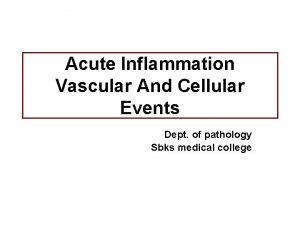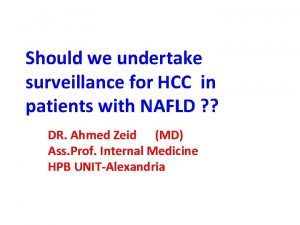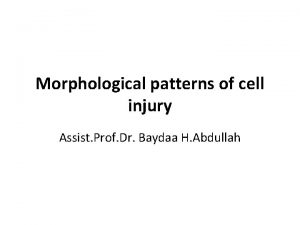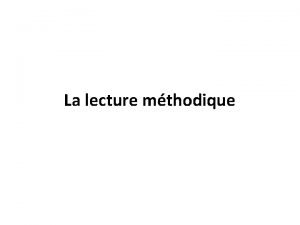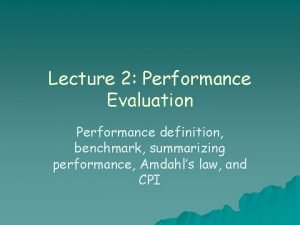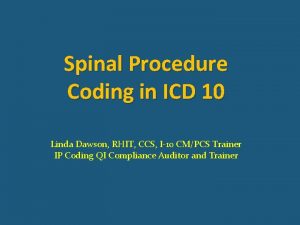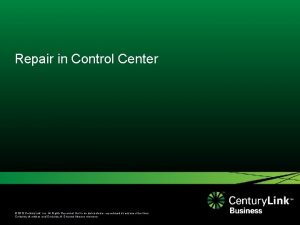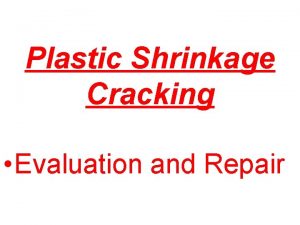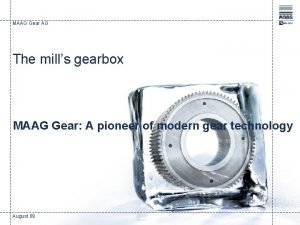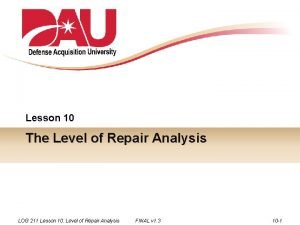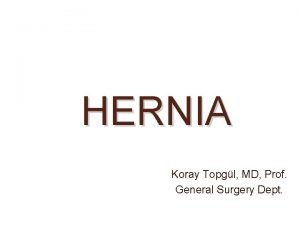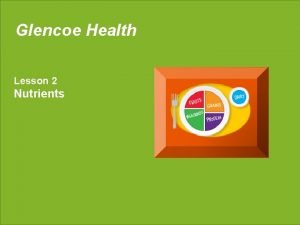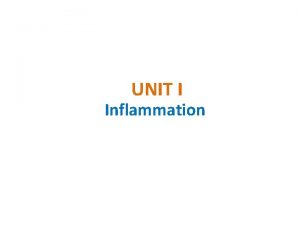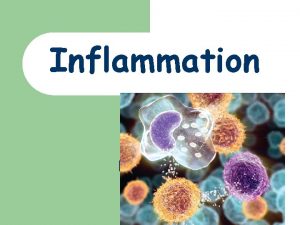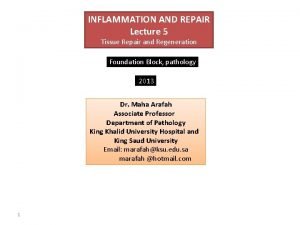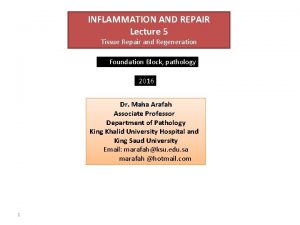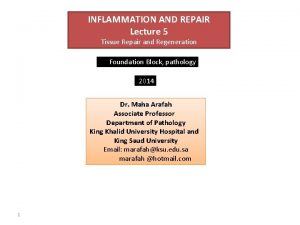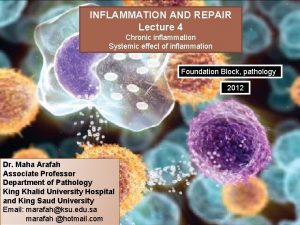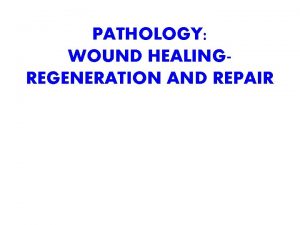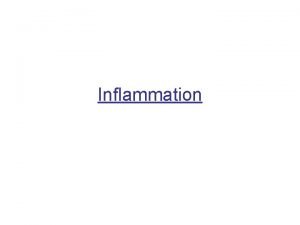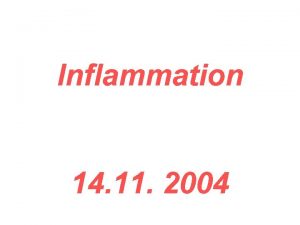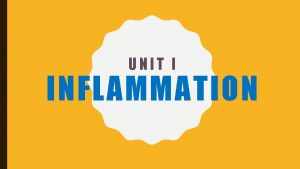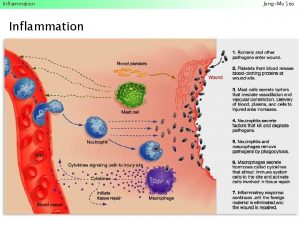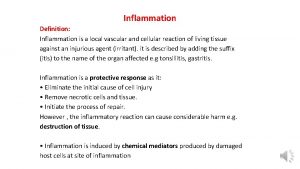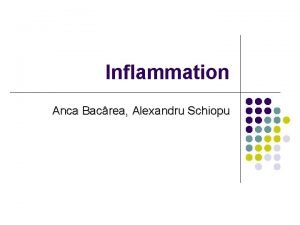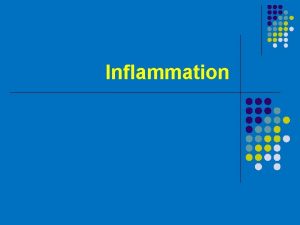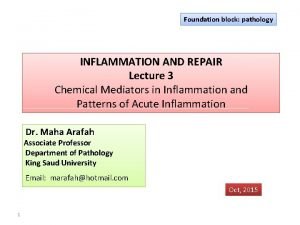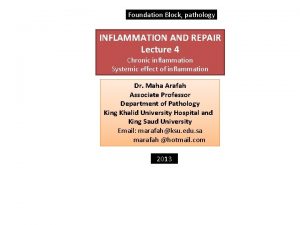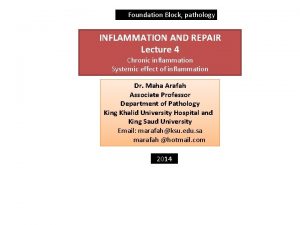INFLAMMATION AND REPAIR Lecture 1 Definition of inflammation










































- Slides: 42

INFLAMMATION AND REPAIR Lecture 1 Definition of inflammation; acute inflammation Vascular Events in Inflammation Lecturer: Dr. Maha Arafah (Foundation Block, Pathology 2015 1

Learning Objectives: 1. Define inflammation. 2. List cells & molecules that play important roles in inflammation 3. Compare between acute and chronic inflammation 4. Recognize the cardinal signs of inflammation. 5. Describe the sequence of vascular changes in acute inflammation (vasodilation, increased permeability) and their purpose. 6. Know the mechanisms of increased vascular permeability. 7. Compare normal capillary exchanges with exchange during inflammatory response. 8. Define the terms edema, transudate, and exudate. 2

Reference book and the relevant page numbers. . • Robbins Basic Pathology 9 th edition • Page: 29 - 34

Injury Tissue damage Infection. Trauma. Physical injury (burns). Chemical injury. Immunological injury (AID). Tissue death (MI). Tissue response Eliminates the effect of injury (pathogen and necrotic tissue) Repair

What is Inflammation? � Inflammation is a local response of the vascularized living tissue to infection and damaged tissue that brings cells and molecules of host defense from the circulation to the sites where they are needed Aim: eliminate the initial cause of cell injury as well as the necrotic cells and tissues resulting from the original insult • A series of events start which leads as far as possible to the healing and reconstitution of the damaged tissue. Therefore, Inflammation is part of a broader protective response (innate immunity ) 5

Inflammation • Although inflammation suggests a harmful reaction symptoms (e. g. , pain and functional impairment). Typically, however, these harmful consequences are self-limited and resolve as the inflammation abates, leaving little or no permanent damage. • It is actually a protective response that is essential for survival. It serves to rid the host of both the initial cause of cell injury (e. g. , microbes, toxins) and the consequences of such injury (e. g. , necrotic cells and tissues).

Inflammation • Inflammation is terminated when the offending agent is eliminated and the secreted mediators are broken down or dissipated. There active anti-inflammatory mechanisms that serve to control the response and prevent it from causing excessive damage to the host. 7


Can inflammation be harmful ! ? • Inflammation can induce harm: e. g. anaphylactic reaction rheumatoid arthritis atherosclerosis 9

Learning Objectives: Upon completion of these lectures, the student should: 1. Define inflammation. 2. List cells & molecules that play important roles in inflammation 3. 4. 5. 6. 7. 8. Compare between acute and chronic inflammation Recognize the cardinal signs of inflammation. Describe the sequence of vascular changes in acute inflammation (vasodilation, increased permeability) and their purpose. Know the mechanisms of increased vascular permeability. Compare normal capillary exchanges with exchange during inflammatory response. Define the terms edema, transudate, and exudate.

A protective response Cells & molecules that play important roles in inflammation Cells of surrounding C. T. The circulating cells: Blood leukocytes Cells of The vascular extracellular wall matrix 11 Plasma proteins Extracellularmatrix of surrounding C. T.

12

Inflammation is mediated by chemical substances called CHEMICAL MEDIATORS What is the source of these chemical mediators? 1. Phagocytes and other host cells Leukocyte Endothelium Mast cell 2. Plasma proteins

The typical inflammatory reaction develops through a series of sequential steps: 1. The offending agent, which is located in extravascular tissues, is recognized by host cells and molecules. 2. Leukocytes and plasma proteins are recruited from the circulation to the site where the offending agent is located. 3. The leukocytes and proteins are activated and work together to destroy and eliminate the offending substance. 4. The reaction is controlled and terminated. 5. The damaged tissue is repaired.

The outcome of acute inflammation is either • elimination of the noxious stimulus, followed by decline of the reaction and repair of the damaged tissue or • persistent injury resulting in chronic inflammation

Learning Objectives: Upon completion of these lectures, the student should: 1. 2. Define inflammation. List cells & molecules that play important roles in inflammation 3. Compare between acute and chronic inflammation 4. 5. 6. 7. 8. 16 Recognize the cardinal signs of inflammation. Describe the sequence of vascular changes in acute inflammation (vasodilation, increased permeability) and their purpose. Know the mechanisms of increased vascular permeability. Compare normal capillary exchanges with exchange during inflammatory response. Define the terms edema, transudate, and exudate.

TYPES OF INFLAMMATION Acute inflammation Chronic Inflammation 17

Features of acute and chronic inflammation Feature Acute Chronic Onset Fast : minutes or hours neutrophils Slow : days, weeks Cellular lymphocytes and infiltrate macrophages Tissue injury, Mild, self limited Often sever & fibrosis progressive Local & Prominent Less prominent, systemic signs may be subtle


Acute inflammation • A rapid response to an injurious agent that serves to deliver mediators of host defense-leukocytes and plasma proteins-to the site of injury.

Learning Objectives: Upon completion of these lectures, the student should: 1. Define inflammation. 2. 3. List cells & molecules that play important roles in inflammation Compare between acute and chronic inflammation 4. Recognize the cardinal signs of inflammation. 5. 6. 7. 8. 21 Describe the sequence of vascular changes in acute inflammation (vasodilation, increased permeability) and their purpose. Know the mechanisms of increased vascular permeability. Compare normal capillary exchanges with exchange during inflammatory response. Define the terms edema, transudate, and exudate.

Clinical Features The 5 ancient cardinal signs of inflammation are Tumor: -swelling Rubor : – redness Calor: – warmth Dolor : – pain Functio Laesa : – loss of function The suffix “its” is added to the base word to state the condition as in appendix/appendicitis

Redness

Learning Objectives: Upon completion of these lectures, the student should: 1. Define inflammation. 2. 3. 4. List cells & molecules that play important roles in inflammation Compare between acute and chronic inflammation Recognize the cardinal signs of inflammation. 5. Describe the sequence of vascular changes in acute inflammation (vasodilation, increased permeability) and their purpose. 6. 7. 8. Know the mechanisms of increased vascular permeability. Compare normal capillary exchanges with exchange during inflammatory response. Define the terms edema, transudate, and exudate.


Events of acute Inflammation • Acute inflammation has three main events: cellular vascular (1) Hemodynamic changes (alterations in vascular caliber that lead to an increase in blood flow) (2) Increased vascular permeability (structural changes in the microvasculature that permit plasma proteins and leukocytes to leave the circulation) (3) Emigration of the leukocytes from the microcirculation (their accumulation in the focus of injury, and their activation to eliminate the offending agent) 26

Vascular Events 1. Vasodilatation Hemodynamic changes 27


edema

Phases of changes in Vascular Caliber and Flow 1. Transient vasoconstriction of arterioles It disappears within 3 -5 seconds in mild injuries 2. Vasodilatation: It involves the arterioles results in opening of new microvasculature beds in the area leading to increasing blood flow – Histamine effect 3. Slowing of the circulation due to increased permeability of the microvasculature, this leads to outpouring of protein-rich fluid in the extravascular tissues. 4. Stasis: slow circulation due to dilated small vessels packed with red cells 30

Slowing of the circulation

neutrophil

Learning Objectives: Upon completion of these lectures, the student should: 1. 2. 3. 4. 5. Define inflammation. List cells & molecules that play important roles in inflammation Compare between acute and chronic inflammation Recognize the cardinal signs of inflammation. Describe the sequence of vascular changes in acute inflammation (vasodilation, increased permeability) and their purpose. 6. Know the mechanisms of increased vascular permeability. 7. 8. 33 Compare normal capillary exchanges with exchange during inflammatory response. Define the terms edema, transudate, and exudate.

Vascular Events 2. Increased Vascular Permeability § A hallmark of acute inflammation (escape of a protein-rich fluid). § induced by histamine, kinins, and other mediators § It affects small & medium size venules, through gaps between endothelial cells 34

Principal mechanisms of increased vascular permeability in inflammation and their features and underlying causes venules Arteriols, capillaries and venules

Mechanisms lead to increased vascular permeability Ø Ø Endothelial cell contraction 15 -30 min Endothelial injury Ø Ø Ø immediate sustained response 6 -24 hours delayed prolonged leakage 12 hours- days Leukocyte-mediated endothelial injury Transcytosis (occurs via channels formed by fusion of intracellular vesicles) Leakage from new blood vessels 36

Learning Objectives: Upon completion of these lectures, the student should: 1. Define inflammation. 2. 3. 4. 5. List cells & molecules that play important roles in inflammation Compare between acute and chronic inflammation Recognize the cardinal signs of inflammation. Describe the sequence of vascular changes in acute inflammation (vasodilation, increased permeability) and their purpose. Know the mechanisms of increased vascular permeability. 6. 7. Compare normal capillary exchanges with exchange during inflammatory response. 8. 37 Define the terms edema, transudate, and exudate.

Increased blood volume lead to increased local hydrostatic pressure leading to transudation of protein-poor fluid into the extravascular space. What is the edema? denotes an excess of fluid in the interstitial or serous cavities • It can be either an exudate or a transudate


Learning Objectives: Upon completion of these lectures, the student should: 1. Define inflammation. 2. 3. 4. 5. List cells & molecules that play important roles in inflammation Compare between acute and chronic inflammation Recognize the cardinal signs of inflammation. Describe the sequence of vascular changes in acute inflammation (vasodilation, increased permeability) and their purpose. Know the mechanisms of increased vascular permeability. Compare normal capillary exchanges with exchange during inflammatory response. 6. 7. 8. Define the terms edema, transudate, and exudate.

Edema is defined as an excess of fluid in the interstitial space. What is the difference between transudates and exudates? Transudate is a fluid with low protein content and a specific gravity of less than 1. 012 It is essentially an ultrafiltrate of blood plasma that results from osmotic or hydrostatic imbalance across the vessel wall without an increase in vascular permeability Exudate An inflammatory extravascular fluid that has a high protein concentration, cellular debris, and a specific gravity above 1. 020 It implies significant alteration in the normal permeability of small blood vessels in the area of injury

TAKE HOME MESSAGES • Inflammation, the local response of the vascularised living tissue to injury. • Could be acute or chronic. • Several cells & molecules that play important roles in inflammation. • Inflammation has vascular and cellular events to eliminate the cause. • Vascular events include vasodilation and increased permeability to deliver a protein rich fluid to the site of inflammation.
 Dna repair mechanism notes
Dna repair mechanism notes Mismatch repair
Mismatch repair 01:640:244 lecture notes - lecture 15: plat, idah, farad
01:640:244 lecture notes - lecture 15: plat, idah, farad Redha meaning
Redha meaning Carbuncle
Carbuncle Vascular response to inflammation
Vascular response to inflammation 5 cardinal signs of inflammation
5 cardinal signs of inflammation Dna polymerase
Dna polymerase Power brake system
Power brake system Electronic suspension system
Electronic suspension system Pressure regulator
Pressure regulator Chapter 44 automotive wiring and wire repair
Chapter 44 automotive wiring and wire repair Dfd busd
Dfd busd Form 337 vs stc
Form 337 vs stc Brake system diagnosis
Brake system diagnosis Automotive maintenance and light repair answer key
Automotive maintenance and light repair answer key Repair and restoration theory of sleep
Repair and restoration theory of sleep Rrr of water bodies
Rrr of water bodies Repair theory of sleep
Repair theory of sleep Cellular events of acute inflammation
Cellular events of acute inflammation Acute inflammation morphology
Acute inflammation morphology Cell injury and inflammation
Cell injury and inflammation Cell injury and inflammation
Cell injury and inflammation Lecture diction définition
Lecture diction définition Lexical expressive means
Lexical expressive means Dfinition
Dfinition Teaching methods definition
Teaching methods definition Wbb99
Wbb99 Tru count air clutch rebuild kit
Tru count air clutch rebuild kit Cpvc ductwork
Cpvc ductwork Thecal sac compression icd 10
Thecal sac compression icd 10 Ems equipment repair
Ems equipment repair Types of position
Types of position Control center centurylink
Control center centurylink Aci crack repair
Aci crack repair Electrical switchboard repair
Electrical switchboard repair Maag gearbox repair
Maag gearbox repair Verb 3 of repair
Verb 3 of repair Level of repair analysis lora
Level of repair analysis lora Occupation
Occupation Glencoe health chapter 10
Glencoe health chapter 10 Hurry 3. hali
Hurry 3. hali Keel operation
Keel operation

